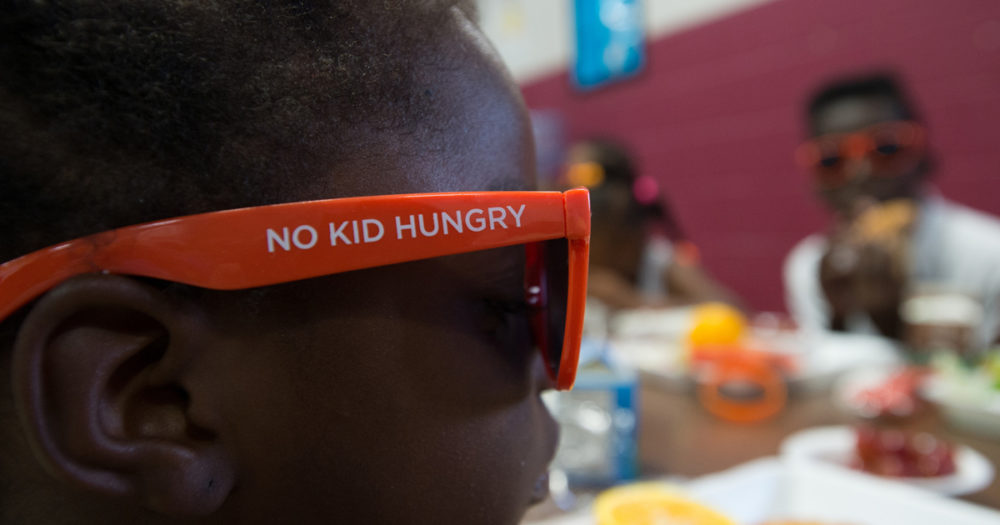As if the Trump administration’s recent rollback of school lunch nutrition rules weren’t bad enough, the president’s ill-conceived, peevish partial government shutdown (now at 33 days and counting) is further endangering schools’ ability to provide healthy meals for the nation’s children. The US Department of Agriculture (USDA), which subsidizes school meal programs, has assured local school districts they would receive funding for those programs through March. But school administrators around the country are looking down the road and wondering whether they’ll have to dip into rainy day or emergency funds, cut afterschool programs, or raid money from summer programs to make ends meet if the shutdown continues beyond that.
The National School Lunch Program provides low-cost or free lunches to more than 30 million children. For many kids and their families, subsidized school meal programs are a lifeline. Children may consume as much as half of their daily calories in school, and for lower-income children, a school meal may be their only meal of the day.
USDA spending bills released by House and Senate leaders this week would fully fund school meals and other child nutrition programs, at more than $23 billion. But these bills are unlikely to be signed into law this week. If the government shutdown continues into February or even March—an astonishing outcome that nevertheless looks increasingly likely—school districts could run out of money to put food on kids’ lunch trays. At the same time, government employees who are furloughed or working without pay may need free or reduced-price lunches for their kids, further stretching school districts’ budgets.
A roundup of local news coverage in recent days documents the uncertainty and strain the shutdown is placing on school lunchrooms from coast to coast:
- The Washington, DC, region, home to some 360,000 federal employees, has been particularly hard-hit by the ongoing shutdown. Prince George’s County Public Schools in Maryland have launched a charitable fund to raise money to provide meals for children affected by the shutdown. The district, which already subsidizes meals for some 60 percent of students, would like to offer free meals to all students, but at $190,000 per day, administrators have determined that would be “fiscally irresponsible.”
- The Maine Department of Education is reminding school officials that applications for free and reduced-price meals may be submitted at any time throughout the school year, even during a federal shutdown. Across the country, Arizona’s Sahuarita Unified School District has already seen an uptick in applications for subsidized lunches since students returned from their winter break.
- Officials at Vance County Schools in North Carolina announced on Facebook that lunch menus “have been revised to a minimum level to conserve food and funding.” Alarmingly, fresh produce is among the items cut from lunches. Elsewhere around the state, school nutrition directors are reportedly watching anxiously to see how long they’ll have to stretch their budgets without federal reimbursements.
- In Missouri, the Hannibal Public Schools superintendent recently assured the school board that the shutdown’s impact on public education “should be minimal,” although the USDA has warned that commodity foods may run short if the shutdown persists, meaning the schools will have to purchase food elsewhere.
- Williamsburg-James City County Schools in Virginia report having enough federal money left to support meal programs until the end of February. After that, it’s unclear what would happen. According to a spokesperson: “If there was a time when federal funding was not available to support these school meal programs, we are hopeful that other funds could be identified as a stop-gap measure in order for us to provide much-needed meals for children. But, we certainly hope it does not come to that.”
- Similarly, officials with Grand Rapids Public School District in Michigan say they could be reaching into “rainy day funds” before the end of February if the shutdown continues, possibly relying on funds intended for the classroom to temporarily cover the costs of food service. “As of right now, we’re fine,” an official told local media. “However, if this drags on, at some point, there’s going to become a question that says, ‘how do we fund these services?'”
As the record-breaking partial federal shutdown continues with no end in sight, many more school districts are surely grappling with these questions. In both urban and rural areas, red states and blue states, they can only hope the fight over the president’s border wall won’t end up literally taking food out of children’s mouths.

